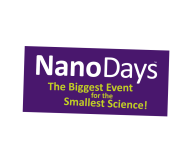DESCRIPTION
The guide considers how new nanotechnologies may affect people and the societies they live in and create.
This guide is focused on "three big ideas" that can provide a framework to help museum staff and visitors feel empowered to reflect on the relevance of nanotechnology in their lives through open-ended conversation. The guide considers how new nanotechnologies may affect people and the societies they live in and create. The three big ideas are illustrated with related videos and hands-on activities and further explored through very brief case studies of three nanospecific technologies, providing further examples of conversations that might occur on a museum floor. Finally, the guide explores strategies and tips for engaging visitors in conversations as part of their learning experience.
Three big ideas:
- 1) Values shape how technologies are both developed and adopted
- 2) Technologies affect social relationships
- 3) Technologies work because they are part of larger systems.
Suggested Citation:
Wetmore, J., Bennett, I., Jackson A., and Herring, B. (2013) Nanotechnology and Society: A Practical Guide to Engaging Museum Visitors in Conversations. Tempe, AZ: Arizona State University for the NISE Network.
DESCRIPTION
The guide considers how new nanotechnologies may affect people and the societies they live in and create.
This guide is focused on "three big ideas" that can provide a framework to help museum staff and visitors feel empowered to reflect on the relevance of nanotechnology in their lives through open-ended conversation. The guide considers how new nanotechnologies may affect people and the societies they live in and create. The three big ideas are illustrated with related videos and hands-on activities and further explored through very brief case studies of three nanospecific technologies, providing further examples of conversations that might occur on a museum floor. Finally, the guide explores strategies and tips for engaging visitors in conversations as part of their learning experience.
Three big ideas:
- 1) Values shape how technologies are both developed and adopted
- 2) Technologies affect social relationships
- 3) Technologies work because they are part of larger systems.
Suggested Citation:
Wetmore, J., Bennett, I., Jackson A., and Herring, B. (2013) Nanotechnology and Society: A Practical Guide to Engaging Museum Visitors in Conversations. Tempe, AZ: Arizona State University for the NISE Network.
OBJECTIVES
BIG IDEA
This guide serves as a short introduction to how museum professionals can engage visitors in conversations about nanotechnology and society and help make our science centers a place where the future of nanotechnology is not just imagined, but shaped.
LEARNING GOALS
Values shape how technologies are both developed and adopted.
Technologies affect social relationships.
Technologies work because they are part of larger systems.
NANO CONTENT MAP
Nanotechnologies—and their costs, utility, risks, and benefits—are closely interconnected with society and with our values.
DOWNLOAD FILES
Credits
Arizona State University
Developed for the NISE Network with funding from the National Science Foundation under Award Numbers 0532536 and 0940143. Any opinions, findings, and conclusions or recommendations expressed in this product are those of the authors and do not necessarily reflect the views of the Foundation.
Creative Commons Attribution Non-Commercial Share Alike 3.0 United States (CC BY-NC-SA 3.0 US).
View more details

NISE Network products are developed through an iterative collaborative process that includes scientific review, peer review, and visitor evaluation in accordance with an inclusive audiences approach. Products are designed to be easily edited and adapted for different audiences under a Creative Commons Attribution Non-Commercial Share Alike license. To learn more, visit our Development Process page.


